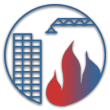 |
 |
 |
 |
|||||||
|
|
||||||||||
 |
 |
 |
 |
 |
 |
 |
 |
|||
 |
 |
 |
 |
|||||||
|
|
||||||||||
 |
 |
 |
 |
 |
 |
 |
 |
|||
Building and Fire Research Laboratory
Building Environment Division
The Building Environment Division reduces the cost of designing and operating buildings and increases the international competitiveness of the U.S. building industry by providing modeling, measurement, and test methods needed to use advanced computation and automation effectively in construction, to improve the quality of the indoor environment, and to improve the performance of building equipment and systems.
The Building Environment Division conducts laboratory, field, and analytical research on building mechanical and control systems; develops data, measurement methods and modeling techniques for the performance of the building envelope, its insulation systems, building air leakage, and the release, movement and absorption of indoor air pollutants, and develops standard communication protocols for building management systems and performance criteria, interface standards, and test methods for the Nation's building industry to make effective use of modern computer-aided design hardware and software and database management systems.
The Building Environment Division began a Green Building Research and Demonstration Program in 1994. As part of that program, grants were given to Montana State University to evaluate a variety of "green technologies" that could be incorporated into the design and construction of a new classroom/laboratory building for the campus. The building is now under design and described in detail on the linked page.
Enhanced Building Performance
Research ProgramsMost of the Division's research is carried out in two main programs:
- Healthy and Sustainable Buildings
- Cybernetic Building Systems
Both programs benefit from collaborations with other BFRL divisions, divisions in other NIST laboratories, industry sponsors, and other government agencies. The objectives of these programs are:
- Healthy and Sustainable Buildings -- To develop measurement methods, test methods, fundamental data, simulation models, and life cycle environmental and economic analysis tools to support the wide-spread use of sustainability in design, construction, operation, and demolition of buildings and their systems/subsystems.
George E. Kelly, Chief
- Cybernetic Building Systems -- in partnership with industry, to develop, demonstrate, disseminate, and assist with implementation of a computer-integrated knowledge system, HYPERCON, including validating multi-attribute simulation models for prediction and optimization of concrete performance taking into account life-cycle costs and environmental impact.
Building Environment Division
(301) 975-5851,
george.kelly@nist.govIndoor Air Quality and Ventilation Group
This group develops computer simulation programs and measurement procedures to better understand air and contaminant transport phenomena in buildings. The results of this research are providing valuable methods to evaluate ventilation characteristics and indoor pollutant concentrations in buildings.
Andrew K. Persily, Leader
Indoor Air Quality Group
(301) 975-6418,
andrew.persily@nist.govHVAC&R Equipment Performance Group
The Group’s research concentrates on ways and means to improve the efficiency and reliability of HVAC&R equipment. The HVAC&R Equipment Performance Group is a new name assumed in September 2003 by the former Thermal Machinery Group to reflect a change in research focus from alternative refrigerants to equipment performance.
Piotr A. Domanski, Leader
HVAC&R Equipment Performance Group
(301) 975-5877,
piotr.domanski@nist.govHeat Transfer and Alternative Energy Systems Group
This group is responsible for three major research activities: providing thermal conductivity measurement services and standard reference materials to the thermal insulation industry; development of methods of test for residential heat pumps, air conditioners, and water heaters; and development of methods of test, measurement techniques, and predictive performance models for Building Integrated Photovoltaics. The group is also attempting to develop an innovative moisture sensing technology for the building community.
A. Hunter Fanney, Leader
Heat Transfer Group
(301) 975-5864,
hunter.fanney@nist.govMechanical Systems and Controls Group
This group improves and lowers the cost of building services by fostering the development and use of more intelligent, integrated, and optimized building mechanical systems and controls. It also develops standard communication protocols for exchanging information between building management and control systems.
Steven T. Bushby, Leader
Mechanical Systems and Controls Group
(301) 975-5873
steven.bushby@nist.govComputer-Integrated Building Processes Group
This group reduces the cost and improves the quality of facility engineering, construction, and operation processes by developing and testing open standards for the representation, exchange, and sharing of information throughout the facility life cycle. The current focus of the group is on the use of open information standards in collaborative processes, such as ISO/STEP, ISO/VRML, and the International Alliance for Interoperability Industry Foundation Classes.
Kent Reed, Leader
Computer-Integrated Construction
(301) 975-5852,
kent.reed@nist.gov
Publications
- Publications prepared by Building Environment Division Staff.
|
Privacy Policy/Security Notice | Disclaimer | FOIA NIST is an agency of the U.S. Commerce Department's Technology Administration. |

|
Date created: 3/12/2001
Last updated: 6/4/2004